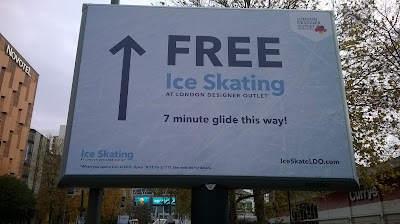Just over 10 years ago in July 2004, the then London Mayor, Ken Livingstone, gave his seal of approval to Quintain's redevelopment of the area around Wembley Stadium.
It is worth looking back at what was promised and checking off what has been achieved in the last decade and those projects that appear to have fallen by the wayside.:
-->
-->
This application was
approved (subject to reserved matters) by Brent Council's
planning committee on 3
June 2004. It consists of:
* 6,100 jobs
* Up to 3,727 new apartment homes for 8,500
people (including 40% affordable housing)
* Some student accommodation and nursing home
/ special care bedspaces
* Areas of open space covering over half the
site and including Arena Square and a pedestrian and public transport only
Wembley Park Boulevard
* A new cinema and other new leisure facilities
(147,000 square feet /13,700 square metres)
* New shops - designer outlets (153,000 square
feet / 14,200 square metres), sports retailing (127,000 square feet / 11,800
square metres) and
stores for the local
community living and working on the site (86,000 square feet / 8,000 square
metres).
* New restaurants, cafes and bars (137,000
square feet / 12,700 square metres).
* New community facilities (88,000 square feet
/ 8,200 square metres).
* New offices and workspace (678,000 square
feet / 63,000 square metres)
* A flagship new 400 bedroom, international
standard hotel
* £20 million to refurbish and update Wembley
Arena
* Parking for the national stadium and the new
community
* The headlines of a huge package of community
benefits has already been agreed, including:
* Delivery of 40% affordable housing - 17%
social for rent on-site, 21%intermediate / key worker homes on-site, 2% social
for rent family accommodation
off-site
* £9m contribution to education provision
* £2.25m for community facilities (not
including health)
* Primary health care facilities for up
to 5 GPs, for occupation by the Brent PCT
* £1.5m for construction education and
training provision
* £1m towards long-term employment education
and training provision
* £1.8m for bus improvements including
£50,000 for bus stop facilities, £1m for upgrades to route PR2 and £750,000 for
upgrades to routes 92 and 224
* £1.6m towards works to Wembley Park Station
to deliver a new ticket hall
* £100,000 towards works to Wembley Central
Station
* £2.65m for road and junction improvements,
including
* Empire Way / Engineers Way (£300,000)
* Empire Way / Stadium Way (£300,000)
* First Way / Manor Drive Improvements plus
pedestrian signage (£300,000)
* Lakeside Way (£500,000)
* Linking of signals Empire Way/Wembley Hill
Road (£300,000)
* North Circular / Drury Way / Great Central
Way (£550,000)
* Wembley Hill Road / Royal Route (£400,000)
* £1m towards Stadium Access Corridor
* £500,000 contribution towards CPZ and
parking management
* £150,000 for neighbourhood policing
initiatives
* £100,000 for community sports facilities
plus providing swimming facilities
* Youth facilities including skateboard and
multi-use games area
* Up to 7 days a year use of the Arena for
community events
* Provision of visitor information centre
within development
* Provision of City Car Club
* £150,000 for disabled facilities grants and
the Brent Access Forum
* £100,000 for public toilets
* £50,000 for CCTV study
* Wireless information system to all
residences and business
The financial crisis intervened of course and Quintain decided, with Brent Council's acquiescence, that the housing was not viable in the then financial situation, and Quintain instead concentrated on building lucrative student accommodation blocks which total around 2,500 units.
The borough is still desperately in need of affordable family housing and this is one of the largest regeneration sites in London.
During those 10 years several projects emerged and then sank without trace including a new primary school, a public swimming pool on the Dexion House site, a National Football Museum and a music centre, Wembley Live.
Quintain itself got quite stroppy with Brent Council in 2008 when it lambasted the Draft Wembley Master Plan as:
- premature in advance of the Core strategy
- contains no realistic delivery strategy
- is too prescriptive
- has numerous contradictions
They key passage in their response stated:

As a consequence Brent Council seemed to shrink away from any conflict with such a powerful developer. The London Designer Outlet, the Cinema and the Civic Centre have been delivered plus several blocks of private student housing and several hotels but the social goals: affordable housing (1,400 units promised in 2004) , health facilities, new school, social care facilities, public swimming pool are yet to come, if at all.
The decade has covered Con-Lib Lab Coalition and Labour administrations - the test now is for all political parties to ensure that something of real value to the bulk of Brent residents is delivered and that they are held to their promises.

















